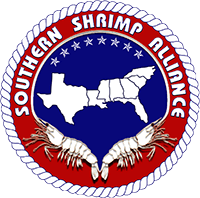The Federal Register published notice today of the U.S. Department of State’s (State Department) determination to suspend the certification of wild-caught shrimp fisheries in the Malaysian states of Kelantan, Terengganu, Pahang, and Johor. Accordingly, because Section 609 of Public Law 101-162 prohibits the importation of wild-caught shrimp unless a fishery or country has received a certification from the State Department, imports of wild-caught shrimp from Malaysia may not be entered into the United States effective for all shipments with dates of export of June 1, 2023 or later.
In response to a request from the Southern Shrimp Alliance, new statistical breakouts in Chapter 3 of the Harmonized Tariff Schedule of the United States (HTSUS) have separately catalogued imports of wild-caught warmwater shrimp since July 2021. Since that time, nearly $775.5 million in wild-caught warmwater shrimp has been imported into the United States. While a large majority of these imports have been sourced from countries that have received a Section 609 certification from the State Department, official U.S. import data continues to indicate significant levels of wild-caught shrimp imports from non-certified nations are entering the United States.
Since July 2021, the United States has imported nearly $52.2 million in wild-caught warmwater shrimp from Bangladesh, Burma, the Gambia, Greece, India, Indonesia, Madagascar, the Philippines, Portugal, Senegal, Taiwan, Thailand, Venezuela, and Vietnam. These imports represent 6.7 percent of the total value of wild-caught warmwater shrimp over the last twenty-one months. In the first three months of this year, the United States has imported roughly $1.8 million in wild-caught shrimp from uncertified countries, with virtually all of that amount (96.2 percent) originating from just three countries: Indonesia ($0.9 million), India ($0.6 million), and Burma ($0.2 million).
In light of the certification requirements imposed by the State Department’s administration of the Section 609 program and NOAA Fisheries’ traceability requirements under the Seafood Import Monitoring Program, the continued significant importation of wild-caught shrimp from uncertified countries is surprising. Because country-of-origin rules for products imported under the relevant HTSUS codes are based on where wild-caught shrimp are harvested, there should be no imports of shrimp attributed to countries lacking a State Department certification.
“The Section 609 program is supposed to ensure that wild-caught shrimp sold in the United States market meets environmental standards that are at least somewhat comparable to those imposed on shrimpers in this country. For Americans, this should provide some comfort that wild-caught shrimp offered for sale has been harvested with the safety of sea turtles in mind,” said John Williams, the Executive Director of the Southern Shrimp Alliance. “Commercial fishermen in this country are expected to abide by the laws regulating them; that same standard must also be applied to importers.”
Read the Federal Register’s notice of the State Department’s Annual Determination and Certification of Shrimp-Harvesting Nations (May 25, 2023): https://shrimpalliance.com/wp-content/uploads/2023/05/Shrimp-Section-609-Certification-List-2023-Federal-Register.pdf
